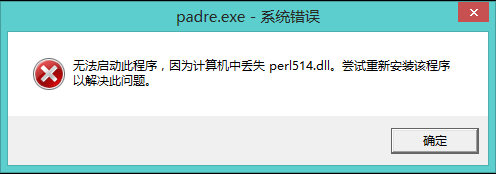在没有警告的情况下可以使用未初始化/未定义的变量的情况如何?
解决方法
>布尔测试
>递增或递减未定义的值
>附加到未定义的值
>自动化
>其他mutators
布尔测试
The number
0,the strings'0'and'',the empty list(),and 07001 are all false in a boolean context. All other values are true.
由于未定义的值为false,以下程序
#! /usr/bin/perl use warnings; my $var; print "A\n" if $var; $var && print "B\n"; $var and print "C\n"; print "D\n" if !$var; print "E\n" if not $var; $var or print "F\n"; $var || print "G\n";
输出D到G,没有警告.
递增或递减未定义的值
如果您的代码将递增或递减至少一次,则不需要将标量显式初始化为零:
#! /usr/bin/perl use warnings; my $i; ++$i while "aaba" =~ /a/g; print $i,"\n";
附加到未定义的值
与隐含的零类似,如果你至少要附加一次,就不需要明确地将标量初始化为空字符串:
#! /usr/bin/perl
use warnings;
use strict;
my $str;
for (<*>) {
$str .= substr $_,1;
}
print $str,"\n";
自动激活
一个例子是“自动化”.从Wikipedia article:
Autovivification is a distinguishing feature of the Perl programming language involving the dynamic creation of data structures. Autovivification is the automatic creation of a variable reference when an undefined value is dereferenced. In other words,Perl autovivification allows a programmer to refer to a structured variable,and arbitrary sub-elements of that structured variable,without expressly declaring the existence of the variable and its complete structure beforehand.
例如:
#! /usr/bin/perl
use warnings;
my %foo;
++$foo{bar}{baz}{quux};
use Data::Dumper;
$Data::Dumper::Indent = 1;
print Dumper \%foo;
即使我们没有明确地初始化中间密钥,Perl负责脚手架:
$VAR1 = {
'bar' => {
'baz' => {
'quux' => '1'
}
}
};
my %foo;
$foo{bar} = {};
$foo{bar}{baz} = {};
++$foo{bar}{baz}{quux}; # finally!
不要将自动化与其可以产生的未定义值混淆.例如与
#! /usr/bin/perl
use warnings;
my %foo;
print $foo{bar}{baz}{quux},"\n";
use Data::Dumper;
$Data::Dumper::Indent = 1;
print Dumper \%foo;
我们得到
Use of uninitialized value in print at ./prog.pl line 6.
$VAR1 = {
'bar' => {
'baz' => {}
}
};
请注意,中间密钥自动修复.
自动化的其他例子:
>引用数组
my $a; push @$a => "foo";
>引用标量
my $s; ++$$s;
>引用哈希
my $h;
$h->{foo} = "bar";
my $code;
$code->("Do what I need please!");
其他mutators
In an answer to a similar question,ysth报道
Certain operators deliberately omit the “uninitialized” warning for your convenience because they are commonly used in situations where a 0 or “” default value for the left or only operand makes sense.
These are:
++and--(either pre- or post-),+=,-=,.=,|=,^=,&&=,||=.
被定义为“或”// =愉快地突变未定义的值而不发出警告.



